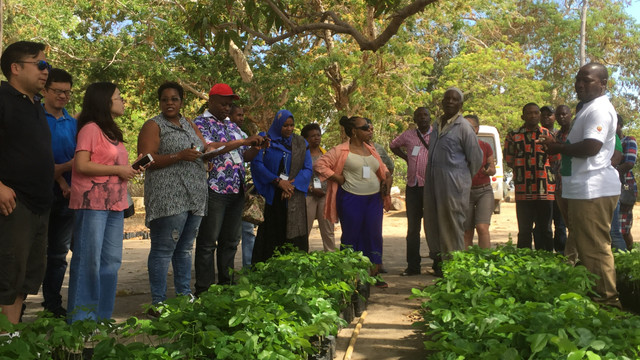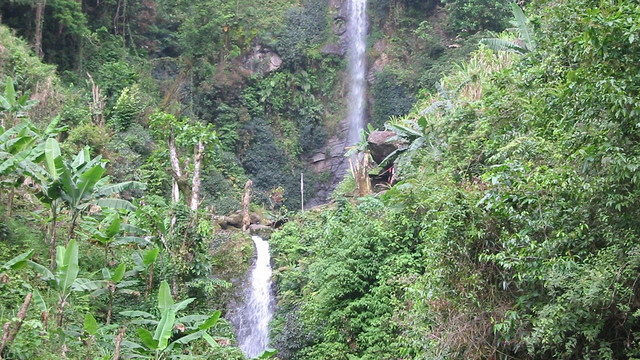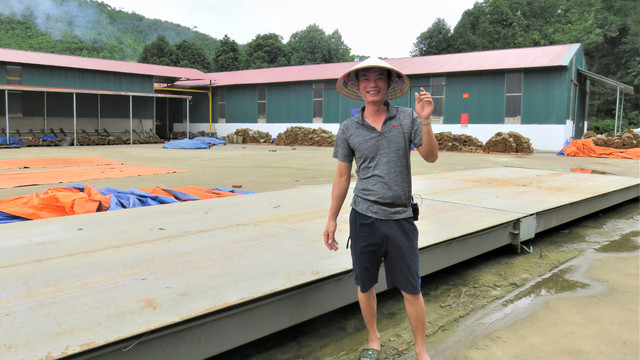When pigs fly: Why is including women in managing forests still so unusual?
Providing some kind of incentive to local communities to keep their forests standing is the aim of the Reducing Emission from Deforestation and Forest Degradation (REDD) scheme. But experience shows that women are routinely excluded from REDD decision-making processes. And if they’re excluded then they can’t benefit equally from its work says Nisha Onta.

Women discuss forest management at a Community Forest User Group meeting in Nepal. Photo: WOCAN
Laxmi Karki, 36, is heavily involved in work aimed at sustainably managing forests located near the Kayarkhola watershed in Chitwan, part of the lusch Terai region bordering northern India. She’s secretary of the Pragati Community Forest User Group (CFUG), attending most of the trainings offered by the REDD Network. Yet when funding in the form of some cows was allocated to two poor women members of the forest user group to provide them with long-term income, neither Laxmi nor the women who were to receive the cows, were consulted. If they had been, they would have realised that the women preferred to use the money to buy pigs, and not cows.
The livestock provide the women with an alternative income from the funds they also receive from Carbon Trust Fund to keep the forests standing. The Pragati Forest user group received (US) $520 (47,000 Nepalese Rupees) as a first instalment from the Carbon Trust Fund as a seed grant (early funding meant to support the user group until it can generate cash of its own through the forest). Out of that amount (US) $122 was allocated to buy the cows, but both women refused to accept the money as they preferred to receive pigs. It was only when the Reducing Emission from Deforestation and Forest Degradation (REDD) monitoring committee asked why the money was left untouched in the fund, that the problem was uncovered, and Laxmi Karki sat down with the women to discuss the situation. In the end, the two women were provided with pigs.
Sadly the institutionalized exclusion of women in the forest sector isn’t just happening in Nepal – it’s prevalent worldwide. Studies conducted in many countries show that forests are managed and policies are designed for and by men.
There are various reasons for this exclusion.
- The forestry sector is male-dominated and provides few educational and training opportunities for women to enter the sector.
- Due to this culture and other socio-cultural factors, young women choose other paths.
- Low levels of literacy, mobility constraints and high work burdens also hamper women’s abilities to participate in public forestry activities.
- Locally, women generally use forests to support their families, such as by collecting non-timber forest products and so remain largely invisible, while men’s work is often linked to timber and markets, and is thus more visible.
The way men and women use and manage forests is not always considered at the international level or within multilateral institutions either. Gender is often not mainstreamed in policy and project design and implementation, and data focussed on women’s use of the forests is rarely collected making it impossible to analyse gender patterns.
An upcoming workshop from Sept 22-24, organised by Women Organizing for Change in Agriculture and Natural Resource Management (WOCAN) and The Forests Dialogue, aims to discuss these issues. The workshop combines field visits to discuss the issues with local people followed by discussions with the global participants. Some of the talking points will include:
- Are there norms that are common to forestry institutions around the world? Which of these support or obstruct women’s inclusion?
- Are projects in sustainable forest management that focus on women’s roles and needs more likely to succeed?
- Why has research and knowledge on women’s roles in forest management not been effective in bringing about their inclusion in the forestry sector?
- Is it possible to follow a “Do No Harm” principle when there is a wide gap between women and men’s abilities to benefit from forestry and environment projects?
- If further investment is made to forestry/environment projects will this widen the gap?
- Is it more effective to address women’s exclusion through gender mainstreaming approaches (fostering the transformations of norms, policies and practices within institutions related to natural resource management) or by designing women-specific project activities? How can we act to mainstream gender in forestry sector?
- Much attention has been paid to indigenous peoples within the forestry sector. Why have women not been able to convince these same institutions of the need to provide the same level of attention to their interests?
A summary of the discussion will be posted on The Forests Dialogue website.
Guest blogger Nisha Onta is the Knowledge Management Coordinator for Women Organizing for Change in Agriculture and Natural Resource Management.



